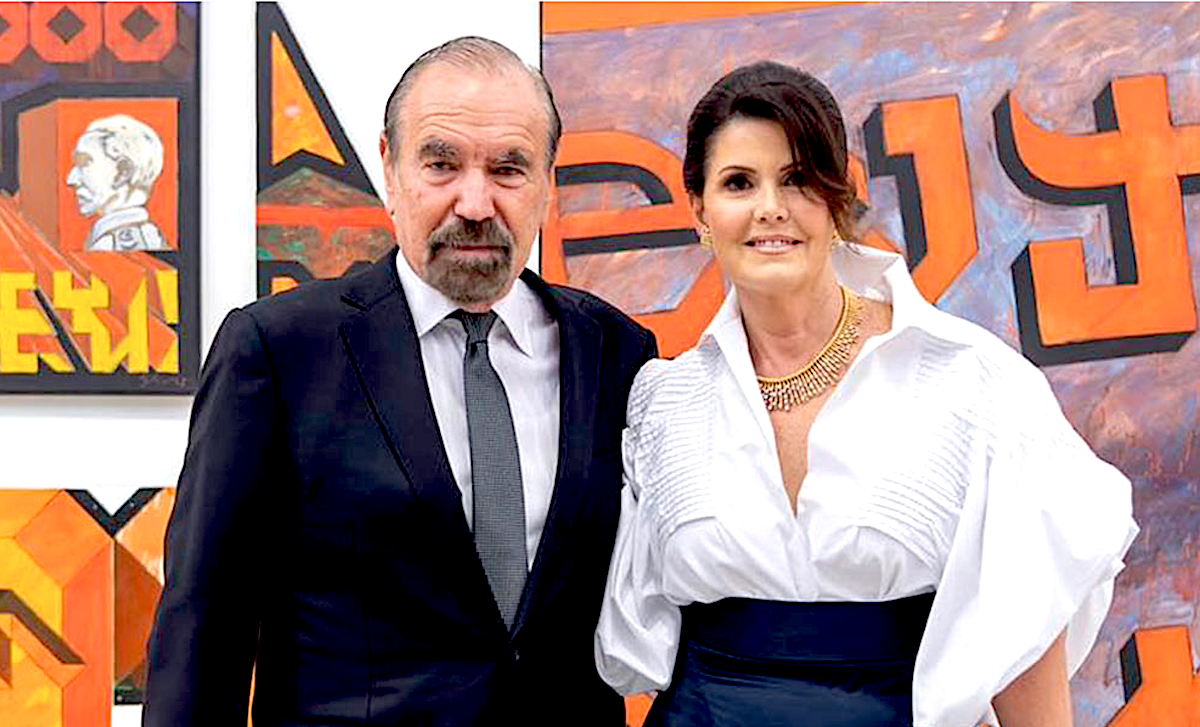Miami power collectors Jorge and Darlene Pérez have donated 36 works by artists from Africa and the African diaspora to Tate — along with a multimillion-dollar endowment to fund curatorial research. It’s a significant gesture, one that strengthens Tate’s increasingly global narrative while extending the Pérez family’s influence well beyond Florida.
The works — 15 artists in total — span generations and geographies: Seydou Keïta’s elegant black-and-white portraits from Bamako; Chéri Samba’s painted satires from Kinshasa; and an early El Anatsui wall sculpture from 1986, carved in wood long before the artist’s now-famous bottle-top tapestries made him an international name.
For Tate, this is about redrawing the map. “It represents a real shift,” says Osei Bonsu, Tate’s curator of international art, Africa and diaspora. “The collection helps us push beyond the traditional boundaries of British or European modernism — it’s about opening up the conversation.”
Some gaps are finally being filled. Tate has never owned a work by Chéri Samba — an omission Bonsu calls overdue. Two of his paintings, J’aime la Couleur (2004) and Live Dans les Sous-Sols du Rex (1982), are now part of the national collection. From Keïta come images that capture the emerging modernity of post-war Mali: sitters posed with bicycles, radios, and attitude. These portraits, long scattered through private collections, have become documents of an era when photography was both a business and a quiet act of resistance.
The new acquisitions aren’t limited to modern pioneers. Joy Labinjo’s The Real Thugs of Britain (2020) depicts senior British police figures — including Cressida Dick — against a searing yellow backdrop, flipping her usual focus on Black domestic life into a confrontation with white authority. Elsewhere, works by Wangechi Mutu, Bruce Onobrakpeya, Rotimi Fani-Kayode, and Buhlebezwe Siwani reflect the evolving language of the African diaspora in all its materials and mythologies.
Jorge and Darlene Pérez began collecting African art around 15 years ago, building what is now a transatlantic collection spanning Latin America and Africa. “Artists from both regions have been overlooked,” says Jorge. “It’s important that their work enters museums like Tate, where it can be seen in dialogue with the wider history of art.”
Their gift doesn’t stop with the artworks. The Pérezes’ endowment will fund curatorial research and permanent posts focused on African and Latin American art — a long-term investment in expertise. Bonsu himself now holds the title of Jorge M. Pérez Senior Curator of International Art, Africa and Diaspora.
This is not the couple’s first significant institutional gesture. In Miami, their philanthropy famously reshaped the city’s museum landscape: in 2013, the Miami Art Museum was renamed the Pérez Art Museum Miami (PAMM) following a $40 million gift. Further donations brought their total contribution there to at least $60 million, alongside the creation of El Espacio 23, their private exhibition space dedicated to emerging and mid-career artists.
In April, Tate Modern unveiled a spectacular new addition to its collection, Iva (1973), a towering six-metre triptych by Abstract Expressionist pioneer Joan Mitchell. The painting, gifted by the Pérez family, now takes pride of place in a gallery adjacent to Mark Rothko’s Seagram Murals, offering visitors an unprecedented dialogue between two giants of American post-war painting.
Tate, for its part, has been gradually recalibrating its global vision. The Pérez donation — which also includes a promised gift of works by Yinka Shonibare, El Anatsui, Joy Labinjo, and others — marks a deepening of that commitment. It’s as much about reshaping the canon as it is about broadening the audience.
Top Photo: Miami power collectors Jorge and Darlene Pérez. Photo Courtesy Pérez Foundation

